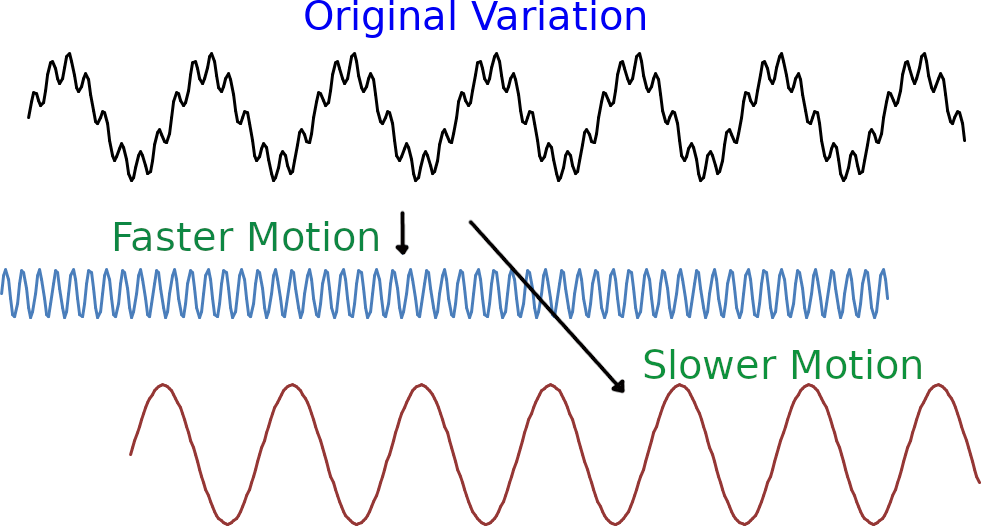Unraveled, for Percussion Quartet and Impossible Electronic Orchestra, re-imagines a famous melody through the lens of a mathematical tool called Fourier Analysis. My friend, Kramer Elwell, his three identical quadruplet brothers, and I put together the following video of the piece:
For audio only, click here.
(You can also view the score here.)
Fourier Analysis and Melodic Contour
Fourier Analysis deconstructs the variation in something over time into a combination of simple (sine-wave) oscillations at different rates. Slow oscillations represent gradual motion, while fast oscillations represent quick or sudden motion. Usually the variation we are interested in contains both slow and fast motion, so Fourier analysis helps us to tease these kinds of motion apart.

From a musical point of view, if we think of a melody as a time-varying pitch curve, Fourier Analysis allows us to separate out the slow oscillations of the melody's overall contour from the faster oscillations of its local ornamentation. Melodic motion operates on many different time scales simultaneously, and Fourier analysis allows us to explore that in a precise way. (If you're familiar with Schenkarian Analysis, this is a bit like a mathematical version of that).
The Compositional Process
"Unraveled" plays with the idea of partially reconstructing a melody by including only some of its constituent oscillations. At first, the "electronic orchestra" plays the melody with all of its slow oscillations— and therefore the overall contour—removed. What is left is only the fluttering of the melody’s small-scale ornamentation. Gradually, the melody is then reconstructed (“re-raveled”) by reintroducing the larger-scale contour. Finally, at the end, it is the the small-scale ornamentation that is removed, causing the melody to devolve into sweeping glissandi.
The percussionists play two roles in this process. First, they use rolls to reinforce different oscillations found within the melody. At the same time, they are engaging in a parallel process of reconstructing the melody's rhythmic accompaniment. As these processes come to fruition, a spark of recognition will surely occur in the listener.
If your interested in further understanding the process by which I did these manipulations, you can check out the verbosely-titled program that I created and used for the analysis and resynthesis of the melody. The process is also described in some detail in my paper on the topic.